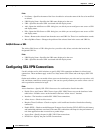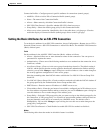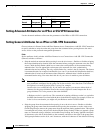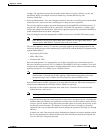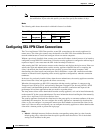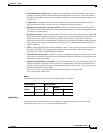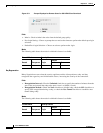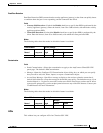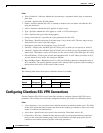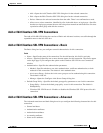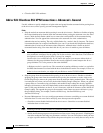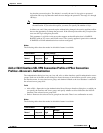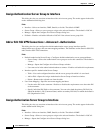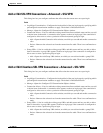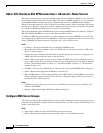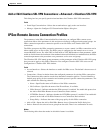
35-42
Cisco ASDM User Guide
OL-16647-01
Chapter 35 General
Configuring Clientless SSL VPN Connections
Fields
• View (Unlabeled)—Indicates whether the selected entry is expanded (minus sign) or contracted
(plus sign).
• # column—Specifies the ACE ID number.
• Enable—Indicates whether this ACL is enabled or disabled. You can enable or disable the ACL
using this check box.
• Action—Specifies whether this ACL permits or denies access.
• Type—Specifies whether this ACL applies to a URL or a TCP address/port.
• Filter—Specifies the type of filter being applied.
• Syslog Level (Interval)—Specifies the syslog parameters for this ACL.
• Time Range—Specifies the name of the time range, if any, for this ACL. The time range can be a
single interval or a series of periodic ranges.
• Description—Specifies the description, if any, of the ACL.
• Add ACL—Displays the Add Web Type ACL dialog box, in which you can specify an ACL ID.
• Add ACE—Displays the Add Web Type ACE dialog box, in which you specify parameters for the
named ACL. This button is active only if there are one or more entries in the Web Type ACL table.
• Edit ACE/Delete—Click to edit or delete the highlighted ACL or ACE. When you delete an ACL,
you also delete all of its ACEs. No warning or undelete.
• Move Up/Move Down—Highlight an ACL or ACE and click these buttons to change the order of
ACLs and ACEs. The security appliance checks ACLs and their ACEs in priority order according to
their position in the ACLs list box until it finds a match.
Modes
The following table shows the modes in which this feature is available:
Configuring Clientless SSL VPN Connections
Use the Clientless SSL VPN Access Connections window to configure clientless SSL VPN access
parameters. This window also records the configuration choices you make in its child dialog boxes.
Fields
• Access Interfaces—Lets you select from a table the interfaces on which to enable access. The fields
in this table include the interface name and check boxes enabling you whether to allow access and
require a certificate for authentication.
• Access Port—Specifies the access port for the connection. The default value is 443.
• Connections—Provides a connection table that shows the records that determine the connection
policy for this connection (tunnel group). Each record identifies a default group policy for the
connection and contains protocol-specific connection parameters.
Firewall Mode Security Context
Routed Transparent Single
Multiple
Context System
• — • ——



